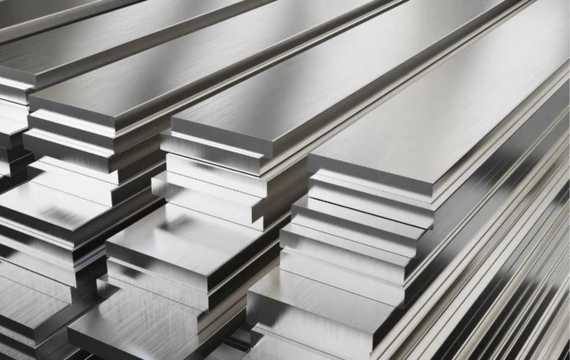
If you’ve ever wanted to know how to cut stainless steel bars, how to cut stainless steel sinks, and many others using various tools without exposing yourself to injury, then this is the right article for you. Let’s dive in.
1. Abrasive Cut-Off Saw
This is also known as an Abrasive chop-off saw. It is like a table-top tool for cutting hard materials like stainless steel. It operates through the use of an abrasive wheel disc. The wheel disc doesn’t possess the ability to incise a cut on objects rather, it erodes the stainless steel and, by doing so, achieves a cut.
However, achieving a desired clean cut with this machine requires filing the cut steel as a finishing touch. This is because of the absence of “saw teeth.” It also summarizes why a lot of metal dust is seen in the working environment of an abrasive cut-off saw. The abrasive wheel of this saw doesn’t dull or get blunt. This is because of the way it functions. If you are probably wondering how to cut stainless steel pipe or how to cut stainless steel rod, then this machine is sure to answer that.
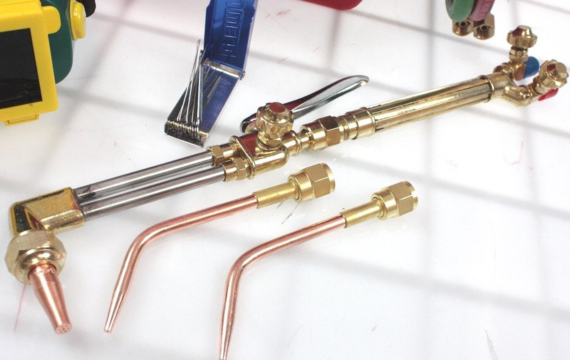
2. Oxy-Acetylene Saw
Oxy-acetylene saw cutting is a highly combustible procedure that requires caution when in use. It involves the use of oxygen gas and fuel gas in the cutting of metals. This oxygen gas should attain a purity level of 99.5% because the purity level of the oxygen will enhance the increased cutting speed of the saw.
When activated, the oxygen gas is passed through the oxy-acetylene torch, causing the temp to rise to 5800°F. This raised temperature, combined with the acetylene gas, produces the combustion that cuts through metals.
Oxy-acetylene saw cuts primarily steels. This means that any attempt to cut any other metal that doesn’t possess oxide can form a protective crust or cause a total meltdown of the metal even before a cut is achieved.
If you are wondering how to cut stainless steel jewelry, this machine is just what you need because it works well with jewelry and sculptures.
3. Plasma Cutting
Plasma cutting introduces heat, also known as high energy or electricity, to some gas to produce plasma—the fourth state of matter. The gas can be Nitrogen, argon, oxygen, or even air. Once any of the gas used reaches a temperature height of at least 12,000°F, it can cut through any object, no matter how hard. How to cut stainless steel cable, A plasma machine comes with a 20-foot torch cable and a 10-foot torch cable, which permits easy movement in the work store without restrictions.
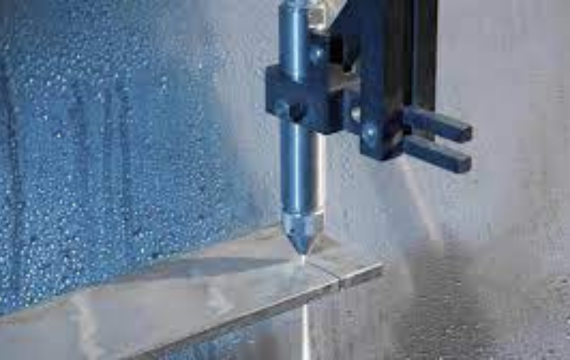
4. Water Jet Cutting
Waterjet cutting is the use of water under high pressure to cut substances, whether soft or hard. This machine is a go-to if you seek answers on how to cut stainless steel without discoloration. The water jet cutter is divided into two, namely:
- Pure water jet cutting: Here, water is the sole cutting agent. The water is pressurized using a hydraulic pump, from where it travels to the exit point through an opening. This opening is no bigger than a pinhole and is constructed with a hard jewel, e.g., a diamond. This type of water jet cutting is used mainly in cutting soft substances
- Abrasive water jet cutting: As the name suggests, water and abrasive substances, e.g., sand, granite, or diamond, are mixed with the water before being pushed through the tiny nozzle. This is especially used to cut harder substances like steel, aluminum, etc.
It is the most effective and has been adopted by a lot of industries due to its ability to cut neatly without any trace of burr, formation of crust, or discoloration due to the presence of heat.
5. Circular Saw
This portable saw has a round blade that can be easily carried around and maintained. It gives an accurate cut with no reports of burr. Apart from stainless steel, it can cut through various materials and is easy to use. It is also capable of trimming materials due to its precision characteristics.
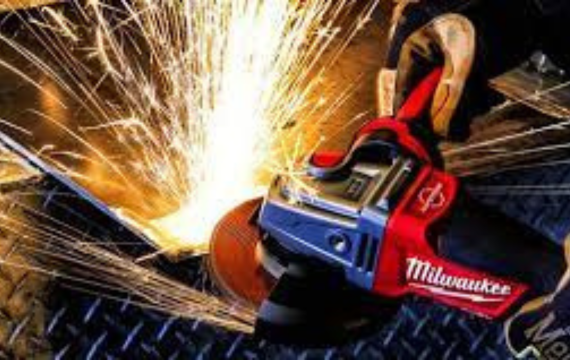
6. Angle Grinder
How to cut stainless steel with angle grinder, This is a multipurpose power machine. Depending on preference, it can come cordless or with a cord. It can be used to polish, cut, deburr, or sharpen steel, largely due to its construction. Just like the name, the grinding disc/wheel (blade) is located by the side of the shaft, and this helps it to perform any of the functions stated above easily.
Angle Grinder functions by the rotation of the grinding wheel, and it spins at thousands of RPMs. The grinding disc can be replaced with a heavier or lighter disc. The disc selection ranges from the abrasive wheel, press center disc, depress center cutoff wheel, flap wheel, diamond wheel, and many others.
The wheels can be used interchangeably depending on what you want to do and what material you’re working on. Let’s find out how to cut stainless steel with an angle grinder. Using the angle grinder has two ways of incising a cut on the stainless steel. These are technical ways of holding and operating the angle grinder while ensuring no harm comes to you.
- The pull to cut: Here, the user, while cutting the steel, doesn’t push but rather pulls the machine to incise a cut on the steel. The implication is that the sparks from the cutting fly forward and away from the user, which is also an easier way of handling the machine. But the drawback is that the angle grinder will move towards the user in case of a kickback, which can be very dangerous.
- The push to cut: The user here pushes the machine away from his body. This technique will cause the sparks to fly towards you and require some force from the user, but the good news is in the case of loss of control or a kickback, the machine moves away from the user.
7. Jigsaw
This is also known as the saber saw. It is a handy machine that can effortlessly do the work of a scroll and band saw. A jigsaw cut in an up-and-down motion with a tiny metal blade. This blade can cut through anything, but using a coolant and observing proper PPE measures when cutting through steel is important.
The metal blade comes in different types, categorized into U-shaped and T-shaped saw. The U-shaped requires some nut tightening before it can stay in place, but this is not the same with T-shaped metal blades. The T-shaped blade, when inserted, locks into place and has a low chance of displacing unless pulled out.
If the U-shaped is not properly fixed, it could cause some accidents. This is why a T-shaped blade is preferred. Let’s quickly take a look at the advantages of using jigsaw.
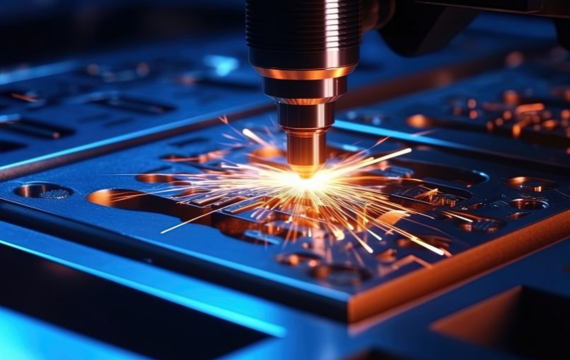
8. Laser Cutting
Laser cutting machine is a computer-controlled equipment. Machines like this are commonly called CNC (Computer Numerical Control). It feeds the computer with the design you want inscribed or cut out. Then, with a button push, the machine neatly cuts out the steel using a laser.
This is very quick and can be used for mass production. This machine comes in sizes depending on how thick and big the steel for the work is. It uses gas for its operation, but not all gases are used for all metals. Oxygen gas is used in carbon steel, while nitrogen is used in aluminum and stainless steel.
It is paramount to consider using dark eye shields and ear plugs in this machine. One of the cool things about this machine is that it uses lasers, so there are no worries about having to cool off after a cutting has been made. It also maintains the color of the steel after the cutting. If you are looking for how to cut stainless steel countertops, then consider CO2, Fiber, and Neodymium Laser Cutters.
9. Reciprocating Saw
This is a tough, portable tool that cuts steel through the use of blades. It has a variety of blades for different materials, and safer to to plug it off the wall socket before changing blades. A little thug on the blade is advised to fix it properly. The blade functions in a back-and-forth motion, and each blade has a particular speed required to run.
The reciprocating saw has a button for speed adjustment; if a blade is used beyond the speed it can take, there will be burns, and this will cause the blade to blunt out easily. This machine is mostly used in demolition and renovation sites to cut through stainless steel. If you are stuck on how to cut stainless steel sinks, this machine is a must-have for you.
10. Shearing
This is the cutting of steel through the use of two sharp metals. One is located at the top of the machine, and the other is below the material to be cut. When turned on, the two blades combine against the stainless sheet, cutting it immediately. Shearing provides straight cuts with minimum waste but doesn’t cut hard steel.
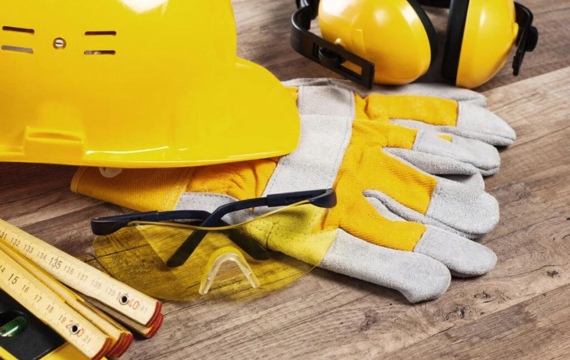
11. Hacksaw
A Hacksaw is a hand tool used for cutting steel, plastic, and other metal forms. It gives an accurate and firm cutting power. It is convenient for a wide range of applications and is mainly identified by its modifiable frame, usually shaped like the letter D. This frame holds the blades under pressure.
There are four main kinds of hacksaw: full-sized hacksaw, junior hacksaw, mini hacksaw, and power hacksaw. With that established, here are the steps on how to cut stainless steel with a hacksaw::
- Choose the perfect blade best for the job.
- Next, the blade should be mounted or fixed in the correct direction.
- Then, ensure the blade is safely fastened to the frame.
- Firmly fix and secure the steel you want to cut in the right position.
- Finally, energetically cut the steel, but be careful enough to move the cutting away from you.
12. Band Saw
A band saw uses a long sharp blade made of a continuous band of toothed metal rotating on opposite wheels to chop materials such as steel, wood, etc. Bandsaws have two wheels connected by a chain in the same plane.
These blades often come in various sizes, which makes the machine very versatile. The different types of bandsaw blades include buttress blades, precision blades, and claw tooth blades.
There are different band saws, including head saws, double-cut saws, and resaws. There are various advantages and disadvantages of using bandsaw steel cutting. Let’s look into some of them.
Safety Precautions When Cutting Stainless Steel
The precautions taken while cutting stainless steel are to protect the eyes, ears, skin, and lungs from exposure to harmful substances, rays, falling objects, etc. Here are some of the safety precaution methods to be taken note of.
- Use a Good Respirator or a P2 Mask: There is little proximity between the person cutting and the stainless steel. There is no way the worker can escape inhaling stainless dust into their lungs unless they use a respirator or a P2 mask.
- Buy a Set of Thick Gloves: These will protect the hands from UV rays, burns from hot stainless steel, sparks, and splatters of fire.
- Use a helmet to protect your face from UV lights and the eyes. You can also use goggles and face shields to protect your eyes, too.
- Use earplugs or headphones to protect yourself against loud noises.
- Get Steel Toed Boots: These protect the feet from getting hit by falling stainless steel or getting burned by flying sparks
- Avoid loose-fitted clothes: A long-sleeved shirt and some pants are the best for cutting stainless steel. Wearing loose clothing may be an advent for fire incidents from sparks. If you wear a religious head cover, ensure it’s tight and not loosely fitted.
- Get a Fire Extinguisher: This should be kept handy while cutting stainless steel and must be tested to ensure 100% working condition.
- Welding Blanket: A welding blanket is used over the machine. It is used while cutting the stainless steel. The essence is to gather the sparks from flying around. This blanket is of a thick material made of silicate, aluminum paper, graphite, etc.
- Thug your blade: when changing your blade, ensure to thug after changing to ensure the blade is held in place. Accidents from this can cause serious injury or even kill.
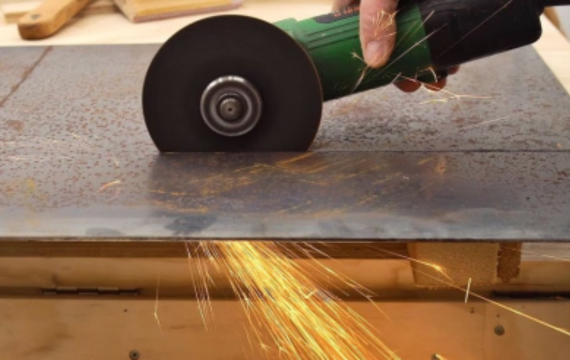
Common Issues That Occur When Cutting Stainless Steel
- Burnt or Blunt Tools due to poor lubricant: Stainless steel is made of chromium. This chromium is difficult to cut and causes much friction when a cut is attempted, so water as a lubricant is advised when cutting through stainless steel. Water helps keep your working tool cool and reduces the burning rate of the tool. This, in turn, keeps your tool from getting burnt or blunt.
- Damage to the Machine: Check and confirm the blade for cutting the stainless is not weaker than the steel. This is to avoid damage to the machine or even deformation of the stainless steel.
- Expansion: Stainless steel can expand when subjected to high pressure. This will deform the metal and form burrs. Using water as a coolant and filing after the cutting will solve the problem.
- Discoloration: When exposed to high temperatures, stainless steel’s color changes. Even though this can be fixed when finishing, it is best to use cutting techniques that will not alter it to maintain its color. E.g., Water Jett cutter.
- Reflection: Not all machines can absorb reflection from stainless steel when cutting.
- Rust: Stainless steel is easily prone to rust, whether by heat or exposure to water.
- Warping: An amount of heat is required for stainless steel levels of thickness. Too much heat can cause deformation and bending.
Conclusion
Cutting stainless steel can be quite demanding if there is no prior knowledge of what machine to use and what amount of heat can neatly do the job. Knowing how to cut stainless steel of all types and sizes is important, as this will help you with your workflow.
This guide has provided some of the best tools for cutting stainless steel. Your tool choice largely depends on the size and type of steel. How to cut stainless steel sheet metal, That said, if you are looking for the best sheet metal manufacturer, KDM Fabrication is your best choice. Check out our products now and choose the right sheet for you.
Additional Resources:
How to cut stainless steel tubing
How to cut stainless steel wire
How to cut stainless steel sheets
How to cut stainless steel by hand
How to cut stainless steel sheet circle
How to cut stainless steel ring




